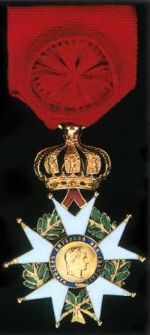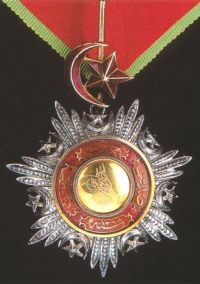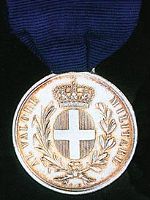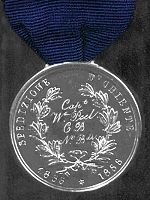Legion of Honour
 Legion of Honour
Legion of Honour
|
This award was founded on the 19th May 1802 by the First Consul Napoleon Bonaparte, with the object of creating a decoration for courage, honour and heroic services to replace the Orders of the Royal Family, that had been abolished by a decree of 30th July 1791. The Legion was originally divided into four classes, but in 1805 it was extended to a fifth. The Legion may be conferred on Frenchmen and on foreigners for military bravery and civil achievement. It may also be conferred posthumously. The holders of the highest class of the Legion receive a monthly allowance of 5 francs. The Legion ranks before all French Orders and Decorations and the President of France is the Grand Master of the Legion.
The badge of the Order is a 5-rayed white enamelled star in gold, in silver for the 5th Class, with a wreath of laurel leaves between the rays. The obverse medallion bears the symbolic female head of the Republic, with the legend "Republique Francaise" on a blue background. The reverse medallion bears a set of crossed tricolours with the legend "Honneur et Patrie" (Honour and Country). It has an oak and laurel wreath as a mounting and all classes of the Order are suspended on a plain red riband.
Legion has five classes Grand Cross, Grand Officer, Commander, Officer and Knight. Peel had the fourth class that would have been silver gilt and worn on a chest riband.
|
 The Order of Medjidjie
The Order of Medjidjie Legion of Honour
Legion of Honour Al Valore Militare
Al Valore Militare Reverse with naming.
Reverse with naming. The steam frigate Shannon
The steam frigate Shannon